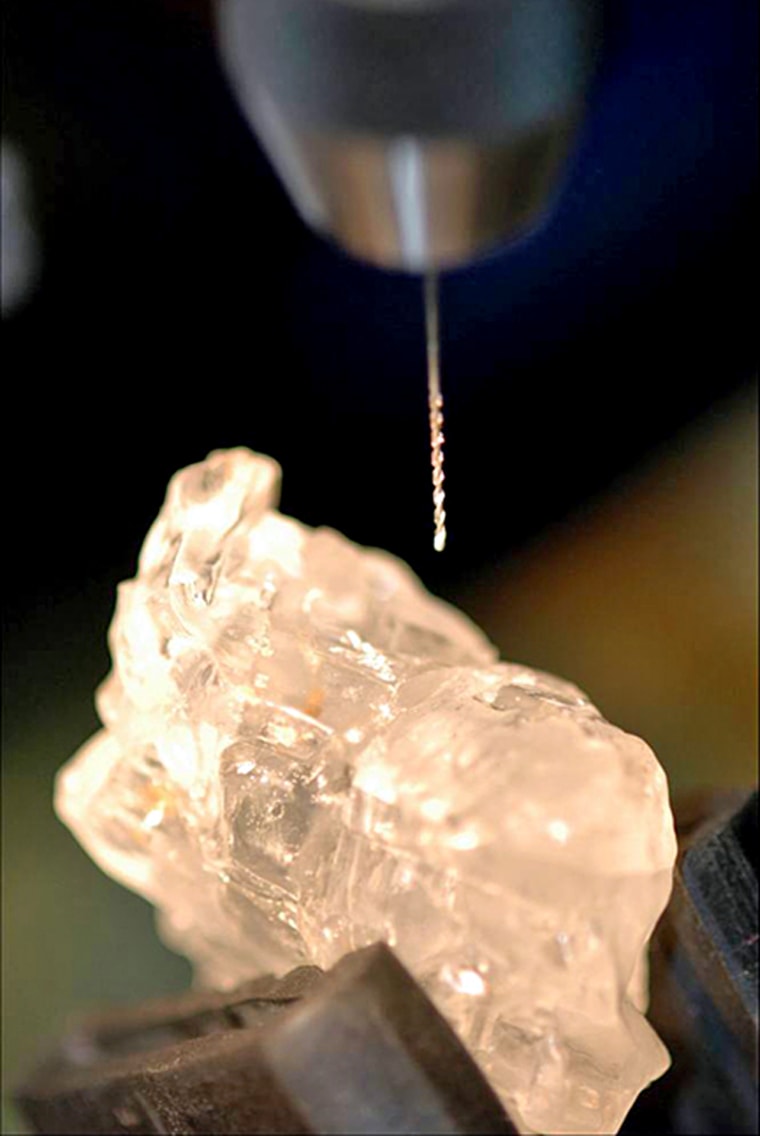If Martian life existed a few billion years ago, scientists think any plantlike microbes would have left behind a stringy fuzz of fibers.
That's because here on Earth, researchers now say they have found such ancient fuzz, called cellulose, preserved in chunks of salt deposited more than 250 million years ago — making it the oldest biological substance yet recovered. The announcement comes about a week after a team of planetary scientists announced discovering evaporated salt deposits on Mars and adds another element of hope to the search for alien life or signs of its past biology.
In fact, microscopic cellulose fibers might be one of the best signatures of any past life on the red planet, said Jack Griffith, a microbiologist at the University of North Carolina at Chapel Hill.
"These fibers are the oldest native, intact remnants of a living thing ever directly observed," Griffith told Space.com. "It's extremely fortuitous timing, as we've just discovered salt deposits on Mars' surface."
Phil Christensen, a planetary geologist at Arizona State University who helped identify the Martian salt deposits and was not involved in Griffith's work, said the new fuzz finding piques his interest.
"If the organic evidence of life's existence disappears at a site, it's hard to be certain anything was there," Christensen said. "I think finding cellulose in salt deposits on Earth makes an even stronger case for searching for life in Mars' salt deposits."
Griffith and his colleagues detail their salty cellulose discovery in the April issue of the journal Astrobiology.
Built to last
Until the team's discovery, protein recovered from a 68 million-year-old Tyrannosaurus rex fossil owned the oldest-known biological material. The 253-million-year-old cellulose fibers Griffith and others found are essentially the same stringy molecules that give wood its toughness.
"Cellulose is like the bacteria's house, the biofilm surrounding them," Griffith said. "Plants adopted cellulose as their structural entity."

He explained that the samples found survived not only because of their exceptional sturdiness, but also due to the salty environment: it killed off bacteria, preventing the cellulose from being chewed up as food.
"Cellulose fibers are just strings of glucose sugar molecules stuck together, end on end," Griffith said. "You can dissolve glucose, but as cellulose it resists some of the harshest chemicals and conditions out there."
He thinks the micro fibers likely came from plant-like algae cells that thrived in a lake similar to Utah's Great Salt Lake.
"The algae may have deposited this stuff as the lake evaporated," he said, entombing it until the scientists dug it out of the Salado Formation — an ancient salt bed in New Mexico and nuclear waste repository — and analyzed it under an electron microscope. "It's very eerie down there. You get a real sense of how old the place is."
Salty surprise?
If a future Mars-bound robotic explorer seeks out signs of ancient life, Griffith said looking for cellulose in salt deposits peppered south of the planet's equator would be the best places to start.
Slideshow 12 photos
Month in Space: January 2014
"Cellulose was one of the earliest polymers organisms made during their evolution, so it pops out as the most likely thing you'd find on Mars, if you found anything at all," Griffith said. "Looking for it in salt deposits is probably a very good way to go."
Christensen said Martian salt deposits likely formed after briny pools of water on the planet's surface — a sun-bathed environment for photo-synthesizing organisms that may have made cellulose.
"The sun is an awfully nice source of energy to turn down in your evolution as a microbe," Christensen said. "If we do find signs of life on Mars, I wouldn't be at all surprised if it is plant-like in nature."
Malcolm Brown Jr., a molecular biologist at University of Texas at Austin who has studied cellulose for decades, affirmed that such molecules could survive the test of time within salt.
"I have no doubt in my mind that it's possible, even after 3 billion years," Brown said, "just as long as excessive heat or pressure didn't destroy the evidence."

